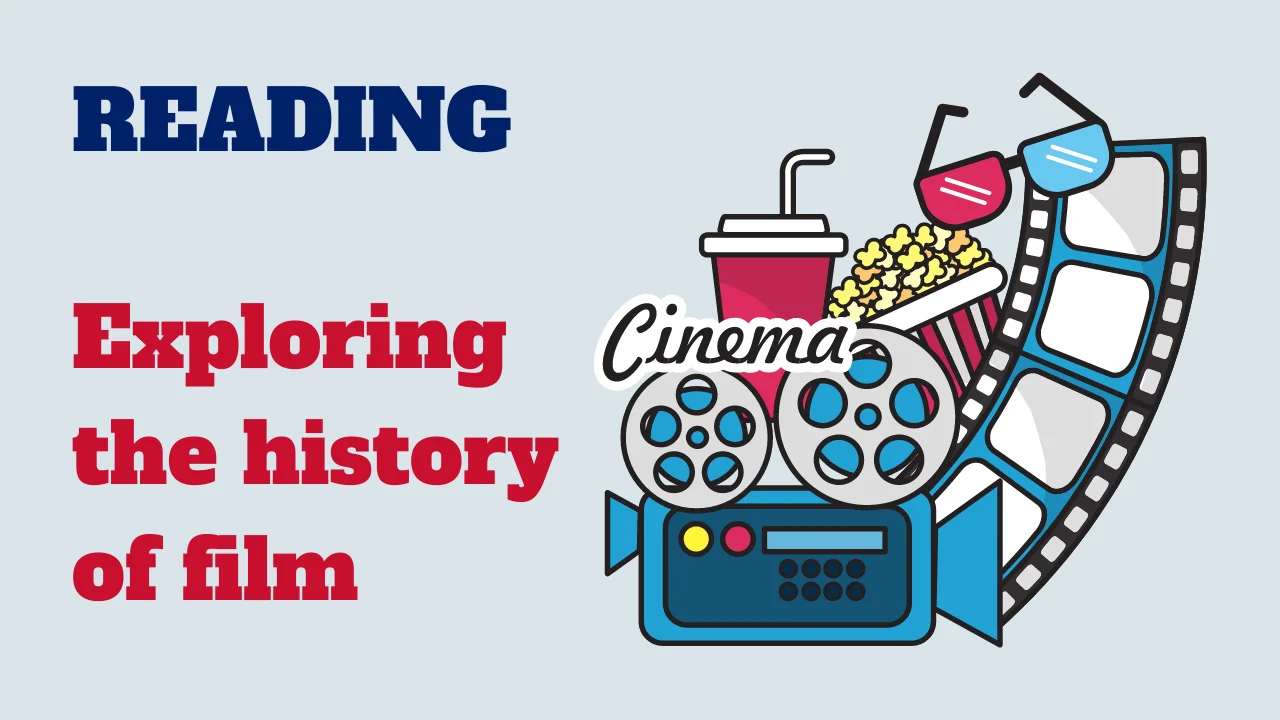Through this reading activity, we will see how the history of film traces the evolution of a visual art form that has captivated audiences since its inception in the late 19th century. From its humble beginnings as a novelty, film has evolved into a powerful medium of storytelling and entertainment.

This reading provides an overview of key milestones and developments in the history of film.
Text: Exploring the history of film
The history of film is a fascinating chronicle of technological innovation, artistic expression, and cultural evolution. From its humble beginnings in the late 19th century to its current status as a global cultural powerhouse, cinema has transformed the way we tell stories and experience the world.
The origins of film can be traced back to the late 1800s, when inventors like Thomas Edison and the Lumière brothers developed the first motion picture cameras and projectors. In 1895, the Lumière brothers held the first public screening of a film in Paris, marking the birth of cinema. These early films were short, silent, and depicted everyday scenes, but they captivated audiences with their novelty.
The early 20th century saw rapid advancements in film technology and storytelling techniques. Pioneers like Georges Méliès expanded the possibilities of cinema with special effects and narrative films, such as “A Trip to the Moon” (1902). The introduction of feature-length films and the establishment of Hollywood as the epicenter of the film industry in the 1910s and 1920s set the stage for cinema’s golden age.
The transition from silent films to “talkies” in the late 1920s, exemplified by “The Jazz Singer” (1927), revolutionized the industry. Sound added a new dimension to storytelling, enhancing the emotional impact and realism of films. The 1930s and 1940s, known as Hollywood’s Golden Age, produced timeless classics like “Gone with the Wind” (1939) and “Casablanca” (1942).
Post-World War II cinema saw the rise of international film movements, such as Italian Neorealism and the French New Wave, which brought new styles and perspectives. Directors like Federico Fellini and François Truffaut pushed the boundaries of narrative and visual storytelling.
The late 20th century introduced blockbuster films and special effects-driven spectacles, epitomized by Steven Spielberg’s “Jaws” (1975) and George Lucas’s “Star Wars” (1977). Advances in digital technology in the 1990s and 2000s, including computer-generated imagery (CGI), transformed filmmaking yet again, allowing for unprecedented creative possibilities.
Today, film continues to evolve with streaming platforms, virtual reality, and globalized production and distribution. The history of film is a testament to its enduring power to captivate, inspire, and reflect the human experience, continuously reinventing itself with each technological and cultural shift.
Comprehension questions
The history of film is a testament to the evolution of a dynamic and influential art form. From its humble beginnings to its current status as a global industry, film continues to captivate audiences and inspire filmmakers around the world. Understanding the key developments and milestones in the history of film provides insight into its enduring impact on society and culture.



